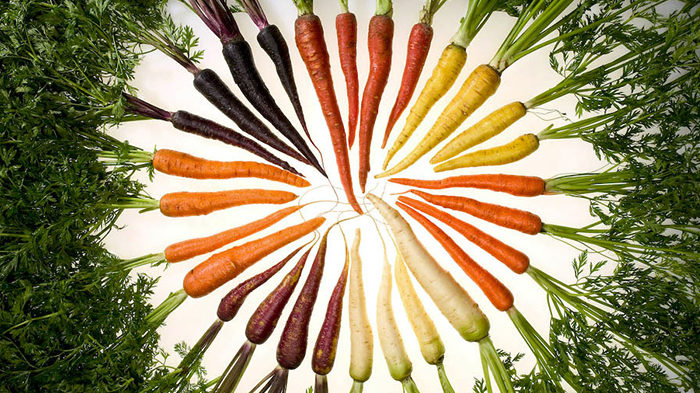
05 Nov The Untold History of Carrots
A brief look into the history of carrots shows us that carrots were not always orange. In fact, they came in a variety of colours including purple, white, red and yellow.
Carrots are thought to have originated in Central Asia, some 5000 years ago, and were being grown in the colours of purple and white. Yet these were not the only colours, there had been red, yellow even black varieties. Over the centuries, traders traveling through the region picked up carrot seeds and carried them along the ancient trade routes of Arabia, Africa, and Asia, selling them in regions anxious to cultivate new and productive plants.
Carrots were known as far back as Ancient Egypt as temple drawings dating from 2000 B.C.E. show a purple plant, which some Egyptologists believe to be a purple carrot. Purple and white carrots had also been well known to both the Ancient Greeks and Romans, who had considered the vegetable an effective medicinal remedy and powerful “green aphrodisiac”.
In the 10th century, purple carrots were grown in modern-day Afghanistan, Pakistan and northern Iran and much later, purple, white and even yellow carrots were imported to southern Europe in the 14th century.
So why are carrots orange? For entirely political purposes! In the 16th century, Dutch farmers in Hoorn started to cultivate orange carrots as a tribute to William of Orange—who led the struggle for Dutch independence—and the colour stuck! William of Orange had founded the House of Orange.
For the Dutch breeders, orange carrots had been a secret way of showing support for William of Orange, and had started growing them in great abundance to such a degree that almost all other forms of the carrot had gone out of mass agricultural production. These orange carrots, packed with the organic compound beta-Carotene quickly became popular and were further developed to become the sweet, succulent orange carrots we are most familiar with today. As a consequence, a thousand years of yellow, white and purple carrot history had been wiped out in a generation.
Without a doubt, carrots are nutritional heroes; they store a goldmine of nutrients. In China and Japan yellow and red varieties remain extremely popular and the purple carrot is making a comeback and is proving popular in recent times. There are literally hundreds of varieties to choose from so why not try a different colour of the carrot today?
